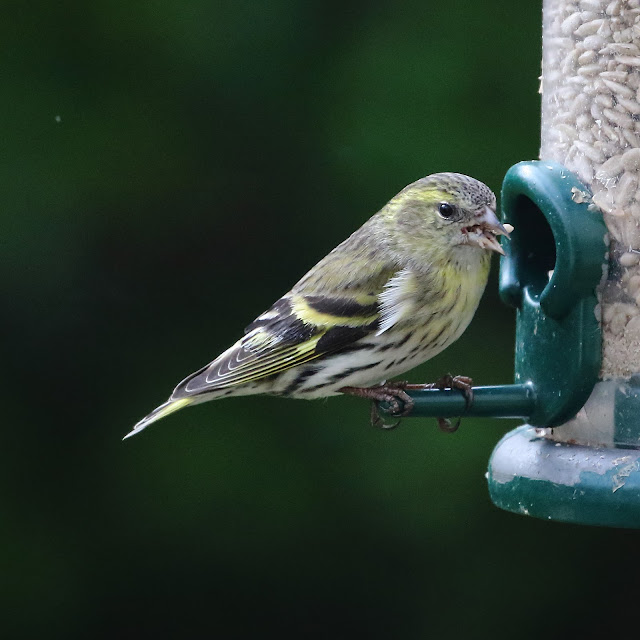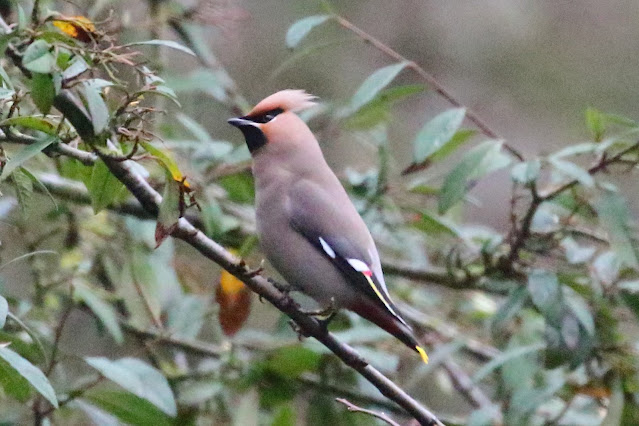February 2024
Amphibians
and Reptiles
Two Smooth Newt
were seen on 10th in a pond on Pampisford Road, and a few days later Common
Toad, Common Frog and newts were spotted in a large pond on Chalky
Road. Common Toad were also seen crossing the road there to get to the
pond, and so we’re rescued!
About five or six Smooth
Newt were also found during cleaning of a Bourn Bridge Rd pond on 20th. One
had a red spotted underbelly so a male. Please keep looking and report anything
you see.
Frogspawn was
spotted in a pond on Bourn Bridge Road on the 15th February, ten days earlier
than last year.
Birds
A total of 52 species were
reported this month in 243 records from 13 reporters. Most notable amongst these
was a Barn Owl in GA church, Blackcap and Siskin being seen in gardens, and three
Woodcock and a flock of Waxwing, both on GP.
A Barn Owl again
found its way into GA church on 15th, presumably sheltering from the persistent
rain this month (see
blog). Following consultation with the Barn Owl Trust, it was
encouraged to exit via the door, left open at dusk. A Tawny Owl were heard
on 6th and 24th.
A flock of 20 Waxwing
was seen in trees around a carpark on GP on 29th, the first record this year in
the village, despite good numbers being seen around Cambridge in this ‘irruptive’
year (see
blog). Three Woodcock
were also spotted one evening around the cricket pitch on GP (19th).
Redwing and Fieldfare
were both reported twice, the latter along the ORC early in the month, and the former
on GP and along Cambridge Rd on 25th. A Siskin, another winter visitor
to Abington, was seen on feeders on Cambridge Rd and Bourn Bridge Rd on 18th
and 27th – these being the first reports this winter in the village. A Blackcap
was also seen in Sluice Wood, these most often also being winter visitors from Europe.
On GP lake, two pairs
of Mandarin Duck were seen on the river, and on the adjacent flooded
fields, a flock of Black-headed Gull, a Lesser Black-backed Gull
and a Grey Heron were seen on 11th, and on the lake, a two Cormorant
and a Moorhen joined the Mallard there. A Reed Bunting was
heard singing from the reeds, and a small flock of Meadow Pipit were
seen.
Up to three Buzzard
were spotted around the village, a Kestrel and a Sparrowhawk were
both seen several times, and a Red Kite was noted twice. A Raven
was also seen flying over the ORC.
Up to four Magpie
were seen widely, and 1-2 Jay were seen on GP (see blog)
and in a Cambridge Rd garden, as was a Red-legged Partridge on two occasions.
A Pheasant was seen along the ORC, and Skylark were heard singing
both along the ORC and along North Rd. Song Thrush were also regularly
heard singing around the villages, often throughout the day.
A Goldcrest was
seen at Hall Farm, and both Green Woodpecker and Great Spotted
Woodpecker (heard drumming) were reported from GP and 1-2 gardens. A few Pied
Wagtail were seen on GP and the Perse sports fields, and 1-2 Robin, Dunnock,
Blackbird and Wren were spotted at several locations.
Reasonable numbers of
Goldfinch, Greenfinch and Chaffinch were seen in several
gardens, as were Blue Tit, Great Tit, Coal Tit and Long-tailed
Tit. House Sparrow were seen in three gardens, and a murmuration of
c400 Starling was seen over North Rd on 20th.
Butterflies
and other Insects
The first butterfly
record of the year was of a Brimstone on 12th along Church Lane, shortly
followed by two further reports of this species on 15th. A Peacock was
also spotted hibernating on 15th.
There were five reports
of a Buff-tailed Bumblebee between 10th and 15th, and some Honeybee
activity was seen around the hives on GP on 13th.
Flora
and Fungi
Snowdrop and Aconite
continued to bloom well in Granta Park around the sluice (see
blog), and the Cherry Plum came into flower later in the month.
Mammals
Fallow Deer –
two seen along ORC on 18th.
Muntjac – one seen
in a Cambridge Rd garden on 2nd and again on 12th.
Rabbit – two spotted
in GA churchyard on 16th, and one in Sluice Wood on 24th.
Weather
A wet month, with 114mm,
three times the average February rainfall, causing the river to flood again (see
blog). This may well become a more regular feature with climate change.
The highest temperature was 16.3°C on both 14th and 19th, with the lowest
temperature being minus 1.8
C on 24th. Overall February was a mild month with
average temperatures of around 12°C. Winds were generally from a westerly to
south westerly direction.
ANW
Trips
A small group visited WWT Welney on 3rd, spotting a total of 32 bird
species (see
blog).
Many thanks to all those who contributed reports of their sightings for February 2024.
Darren
Bast, David & Gaynor Farrant, Betsy Gutteridge, Len Mead, Andy & Polly
Merryweather, Joan Nevin, Nancy Ockendon, Brian Parris, Barbara Phippen, Gareth
Rees, Gill Smith, Jade Taylor-Salazar, Maggie Turner, Derek Turnidge.




















